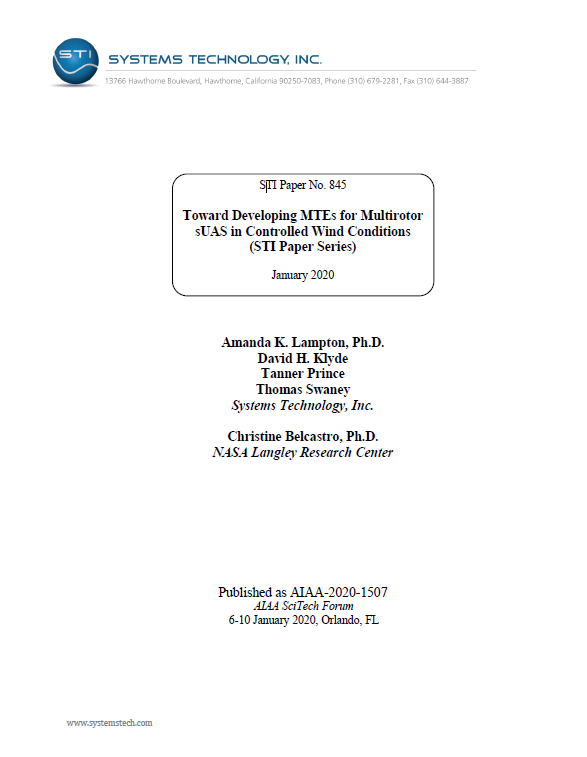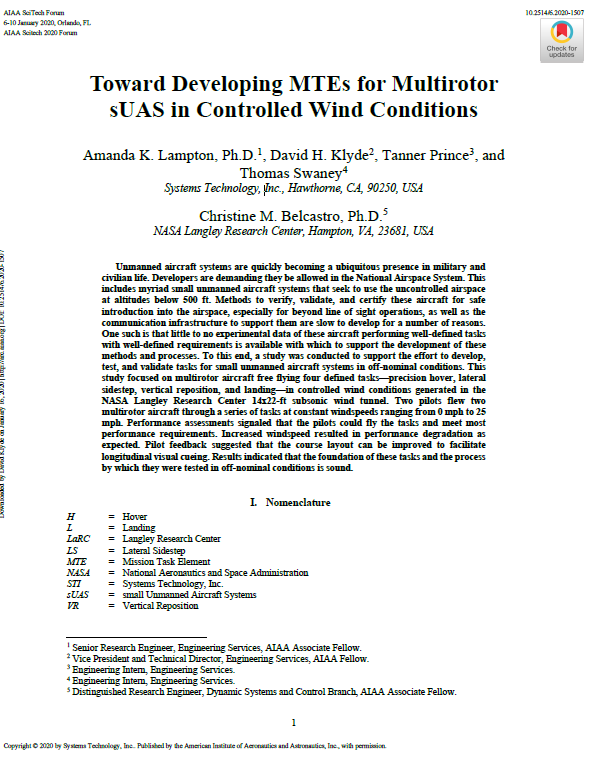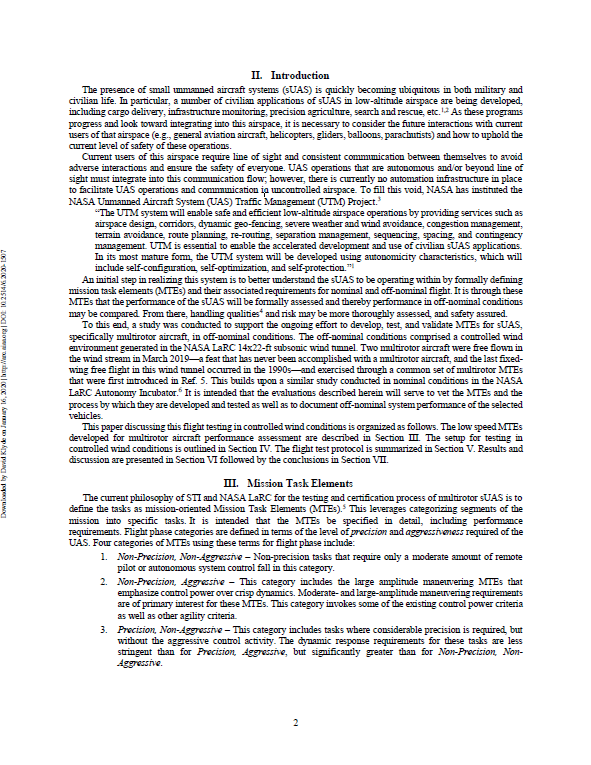
Toward Developing MTEs for Multirotor sUAS in Controlled Wind Conditions (STI Paper Series)
Unmanned aircraft systems are quickly becoming a ubiquitous presence in military and civilian life. Developers are demanding they be allowed in the National Airspace System. This includes myriad small unmanned aircraft systems that seek to use the uncontrolled airspace at altitudes below 500 ft. Methods to verify, validate, and certify these aircraft for safe introduction into the airspace, especially for beyond line of sight operations, as well as the communication infrastructure to support them are slow to develop for a number of reasons. One such is that little to no experimental data of these aircraft performing well-defined tasks with well-defined requirements is available with which to support the development of these methods and processes. To this end, a study was conducted to support the effort to develop, test, and validate tasks for small unmanned aircraft systems in off-nominal conditions.
Download Now

